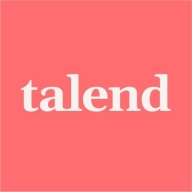

Talend Data Integration and Microsoft Azure Logic Apps compete in data integration and workflow automation. Talend appears ahead in connectivity and real-time processing, while Azure Logic Apps excels in cloud integration and is ideal for enterprises within the Microsoft ecosystem.
Features: Talend Data Integration offers extensive connectors, open-source flexibility, and strong data-processing capabilities for diverse integration needs. On the other hand, Microsoft Azure Logic Apps provides powerful automation, scalability, and seamless integration with other Microsoft cloud services, enhancing workflow automation efficiency.
Room for Improvement: Talend could improve its user interface to lower the technical expertise required for use. Its real-time processing, although robust, can become complex for new users. Additionally, Talend's initial setup could be streamlined. Azure Logic Apps could enhance support for non-Microsoft ecosystems. The user interface, while functional, may be too simplified for advanced users requiring more customization. There is room for better documentation to assist new users in maximizing its features.
Ease of Deployment and Customer Service: Microsoft Azure Logic Apps boasts straightforward deployment with a cloud-first approach leveraging Microsoft’s global data centers, offering seamless integration and support. Talend offers versatile deployment options that cater to on-premise and cloud needs but often require more technical expertise, which could be addressed by enhanced customer support.
Pricing and ROI: Talend Data Integration demands an upfront investment focusing on open-source flexibility, resulting in significant ROI for complex scenarios. Microsoft Azure Logic Apps uses a pay-as-you-go model with predictable pricing, advantageous for businesses seeking scalable solutions and integrating with existing Microsoft investments, simplifying budget management and promptly justifying costs.
You can't generalize it because it depends on how many connectors you use, how many workflows you build, what scalability is required, and the amount of data to be ingested.
It has helped us save a lot of time by automating repetitive data processes and reducing manual interventions.
They didn't want to use separate ETL tools for MDM or for TMC and data preparation, which is all included in one package.
It is easy to reach out to Microsoft for support if needed.
The support is good, with multiple options like developer support and 24x7 support.
The support team is responsive when we raise issues, and they usually provide clear guidance or solutions.
The customer support for Talend Data Integration is very good; whenever I raise a ticket in the customer portal, I immediately receive an email, and follow-up communication is prompt.
It's just clicks away, and you can also set it up as auto-scaling.
By using features like job parallelization and modular design, we can expand our data flows without having to rebuild everything.
The scalability of Talend Data Integration is good; if it weren't scalable, it wouldn't be reliable.
I have never seen it misperforming.
We have had it implemented for two years without issues.
Once the jobs are properly designed and deployed, they run reliably without major issues.
Microsoft Azure Logic Apps needs further development in consistency and durability, particularly for handling larger data volumes beyond 1 MB.
The business rules engine is still not fully developed, and it would be very helpful to see improvements here.
My experience with their pricing indicates that pricing is complicated to understand and costly.
It would be great to have more ready-to-use connectors for modern cloud and SaaS platforms.
Talend Data Integration can be improved by reducing the license cost, as it is a bit high compared to other tools, which can be a burden for small-scale companies wanting to buy a license.
Regarding ETL, Talend Data Integration is great, but concerning real-time data processing, people are not really sure about Talend Data Integration or might not know how it provides such types of flexibilities.
There are no upfront licensing costs or contracts you are bound to.
Microsoft provides a reliable solution, but it is considered expensive compared to others.
My experience with Talend Data Integration's pricing, setup cost, and licensing is that it is a bit higher compared to other tools, making it not very affordable.
The workflow in Logic Apps enables integrating multiple applications.
Microsoft Azure Logic Apps has many features that are beneficial for workflow automation, such as running automation tasks and facilitating communication between different interfaces.
Even for Blob storage, we use tokenized endpoints that give us access to this storage account, making it secure.
By automating daily data loading processes, we reduced manual effort by around three or four hours per day, which saved roughly 60 to 80 hours per month.
Flexibility is a key feature I appreciate about Talend Data Integration, especially the integration of Java within it and the ease of integrating with multiple source repositories such as GitHub and Bitbucket.
The best feature of Talend Data Integration is its multiple data DB components; we have almost all the components and also cloud versions, with TMC allowing us to perform data preparation and data stewardship.
| Product | Market Share (%) |
|---|---|
| Microsoft Azure Logic Apps | 12.4% |
| Talend Data Integration | 1.4% |
| Other | 86.2% |


| Company Size | Count |
|---|---|
| Small Business | 17 |
| Midsize Enterprise | 2 |
| Large Enterprise | 24 |
| Company Size | Count |
|---|---|
| Small Business | 2 |
| Midsize Enterprise | 2 |
| Large Enterprise | 4 |
Connect your business-critical apps and services with Azure Logic Apps, automating your workflows without writing a single line of code.
Talend Data Integration efficiently handles data transformation and integration with ease, supporting complex business needs. It enables seamless data management across all sources.
Talend Data Integration offers a robust platform for managing and transforming data. It connects disparate systems, enabling data flow across various environments. Users benefit from its ability to streamline processes and improve data accuracy. Its user-friendly interface and flexibility make it a preferred choice for data integration experts.
What are the key features of Talend Data Integration?In finance, Talend Data Integration enhances transaction data processing and compliance reporting. In healthcare, it ensures accurate patient data management, while in retail, it optimizes inventory and customer data analysis. Its adaptability makes it valuable across multiple sectors, addressing specific industry requirements.
We monitor all Integration Platform as a Service (iPaaS) reviews to prevent fraudulent reviews and keep review quality high. We do not post reviews by company employees or direct competitors. We validate each review for authenticity via cross-reference with LinkedIn, and personal follow-up with the reviewer when necessary.